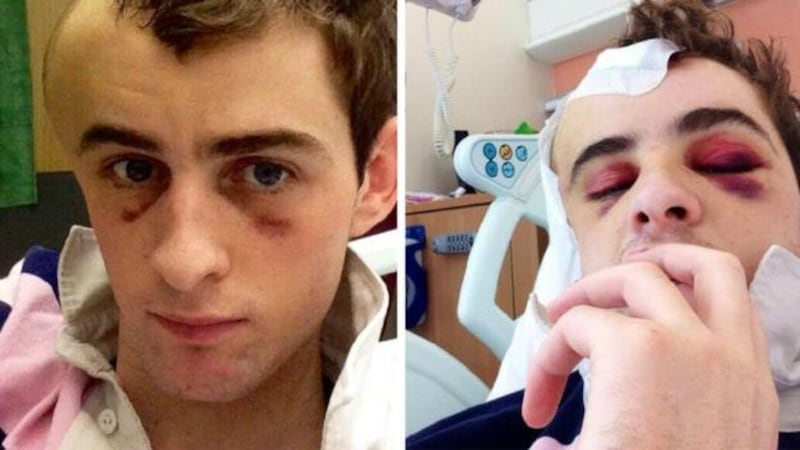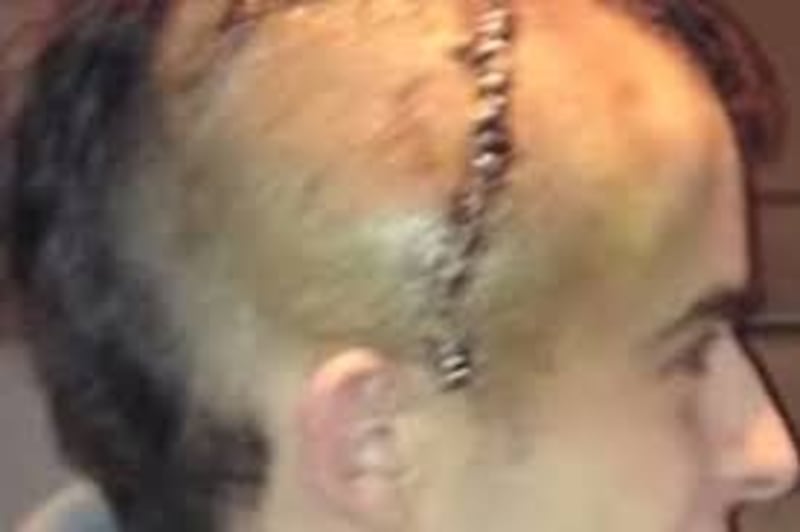Five days before Christmas, on a cold, deserted Wednesday evening at Kempton Park, Wake Up Harry cruised into the straight, travelling more smoothly than any other horse in the race.
If you knew nothing about Wake Up Harry you would have called him the winner two furlongs from home, but low grade horses sometimes have quirks and holes, and his young trainer couldn’t believe what he was seeing – not without doubt.
“He’s got two big wide eyes on him and he’s always looking behind,” says Brian Toomey. “If he’s not on a going day, the 12 apostles wouldn’t get him home.”
A furlong out Wake Up Harry hit the front and couldn’t find a way to lose. His owner, Harry Redknapp, was sitting in a Sky Sports studio in Anfield covering a Carabao Cup match. Liverpool had just gone one up against West Ham. Harry stole a peek at Kempton on his phone.
“He rang me literally seconds after the horse won,” says Toomey, “absolutely roaring down the phone.”
Toomey’s training career was only weeks old. He had taken a lease on a beautiful new yard in Buckinghamshire and invested himself, without partners or backers; without flinching. Wake Up Harry was his first winner. Toomey drove the lorry to the races and paid someone 50 quid to lead the horse around the parade ring. It was the end of a long, gruelling, unmapped road and the start of who knows what?
Off Broadway he had made a little splash. Every start-up yard needs owners and for years Toomey had been gathering connections. A mutual acquaintance suggested Redknapp.
“And I’m like, ‘That’s the fellah that won I’m A Celebrity.’ I’ve never watched a football match in my life – I don’t know anything about football.

“I went to meet him anyway. It was just him and me, sitting down at a table for two hours. He gave me his number and he said, ‘I’ll support you when you start’. This was two years ago. He probably thought I’d never start. He said he likes people with a bit of drive and determination. He said he knew my story.”
That was enough to know.
Toomey’s story was bound up with the day racing nearly claimed his life, and everything he did to get his life back. In July 2013 Solway Dandy fell at the third last hurdle in a conditional jockeys’ race in Perth.
To the naked eye it looked like an everyday fall, captured momentarily on film until the camera was obliged to follow the race and the mundane business of winning and losing. Toomey was catapulted over the horse’s neck, and because he dropped so fast he couldn’t summon his arms to break the fall. He landed on his head.
The air ambulance was called to the track but his injuries were such that they couldn’t risk making him airborne. By the time he reached the hospital in Dundee, Toomey’s brain had started to swell and they needed to cut away part of his skull.
At the track they said he had been clinically dead for about six seconds. By the time he arrived at the hospital they reckoned he had about a 3 per cent chance of survival. His girlfriend at the time was Amy Ryan, daughter of the trainer Kevin Ryan; they flew to Dundee by private plane and when they reached the hospital they were told to brace themselves for the worst.
Toomey’s parents arrived from Limerick, greeted by the same news. They started making arrangements for his funeral. They decided that his organs should be donated. Nobody could see a way out. After a catastrophic breakdown in communication the British Horseracing Authority [BHA] issued a statement saying that Toomey had died.
Toomey was put into an induced coma but after five days his heart started to give up. The rest of his family was summoned from Ireland. This was it: the end. Then his condition stabilised again. It was as if his heart had rebooted itself. As each day passed he was making time that nobody thought he had.

Bit by bit Toomey became an active collaborator in his recovery. He was released from the induced coma, heavily medicated, with a damaged memory and oscillating moods, but lucid and unparalysed.
After a couple of months they inserted a titanium plate to replace the third of his skull that had been removed and they stapled his head back together above his ear. Toomey spent 157 nights in hospital, discharged to an unfathomable future.

“The nights were the hardest. I couldn’t turn my brain off. I was very down and overthinking everything. There were nights when I thought I didn’t have much of a future. I hit a big low during my recovery. I was beating myself up about it. How much more was I going to recover?”
His recovery had no parameters at first. He needed to learn how to walk again. How to make a cup of tea. How to drive a car. Memories of his childhood in Limerick had been wiped out and he knows there are still many blanks now. There is no way of knowing how many. There is no audit for that loss.
But as soon as he started getting better he declared his intention to be a jockey again. He can’t say if people took him seriously in the beginning, but there came a tipping point in his insistence.
“I think my family copped on that it was really helping me, that having this goal was keeping me optimistic. For a long time in my recovery I let on that I was better than I was. When I said my goal was to get back racing there was a lot of negativity around. People were like, ‘You’ve got no chance. You were nearly killed. Half of your head was kicked in’. In the early days a couple of doctors said, ‘That’s lunacy’. I don’t hold it against any of them. If someone else was in my position I might have thought it was impossible too.”
For a year he wasn’t allowed sit on a horse in a licensed yard. When that time had elapsed he went in pursuit of his jockey’s license again. Over a period of months the BHA put him through a battery of searching tests. Two neurosurgeons vouched for his physical recovery.
His parents wrote a letter supporting his wish to ride again, burying their worries under his burning desire to get back. At Southwell, on a summer Sunday in 2015, 738 days after his accident, Toomey returned to the saddle.
His comeback, though, was soon aborted. There was too much trepidation about his wellbeing.
“I was probably on cloud cuckoo land,” he said years later. “I thought I was going to get going again. I thought I was going to be successful again.”
After 23 rides he returned home, hoping that a fresh start might make a difference. The authorities in Ireland, though, refused to grant him a jockey’s license.
“The owners and trainers [in Britain] were too afraid to put me up in case I got another fall. Everyone was well aware what I’d been through. I couldn’t accept it. I still don’t accept it now, because in my mind I’m grand.
“Everyone likes achieving a goal. It was something that took an awful lot of courage and time. It was very hard to accept it [when it didn’t work out], but I always tried to have something to look forward to. I always had a goal. I stayed strong-minded that way.”
![Brian Toomey at Wetherby in 2010. 'The owners and trainers [in Britain] were too afraid to put me up in case I got another fall. Everyone was well aware what I’d been through.' Photograph: Alan Crowhurst/Getty Images](https://www.irishtimes.com/resizer/v2/G5PZ2O5OIFEPZLJGTIQC5MJPB4.jpg?auth=7fcc8acaba25303b3e7b319a0b55dd6b0b337ca11eaa2f155b2a3f95c32db5e2&width=400&height=494)
If he had quit riding immediately after the injury Toomey would have been entitled to an insurance payout of £60,000. When his riding career came to an end in Ireland he pursued that compensation and was turned down. He argued that the injury had ultimately been career-ending; their counterargument was that he had made a sanctioned comeback.
“It didn’t make sense to me. It’s called career-ending insurance. When I got back I paid into that insurance scheme again. My career was ended [by the injury]. I got turned down in Ireland by a neurologist.”
Training racehorses had always been in the back of Toomey’s mind. In 2017 he completed a trainer’s course and started to stockpile experience. He went to Dr Richard Newland’s yard as an assistant for a year, and spent a lot of time with Clive Cox. His ultimate desire, though, was to strike out on his own.
“I never gave myself a chance to think that I was done. I wanted to come back and do what I was passionate about. The amount of people telling me that I was mad [to go training horses]. They were like, ‘You’re f**king nuts. The outgoings are crazy’ – all this. But I had my heart set on it.”
In his life, Toomey had taken more outlandish risks. After a long search he found a yard that he fell in love with. He had some savings to seed the business and enough resources to keep him going for a couple of months if he didn’t find horses or owners straight off the bat. Within a couple of weeks he had filled seven stables.
Amo Racing, one of the most powerful ownership groups in Britain, have a horse in the yard. Two hugely successful Irish businessmen, based in London, have supported him too. A work rider comes in four mornings a week. Other than that the infant yard is cradled in his arms.
“I was brought up milking cows so I never shied away from a fork or a shovel. By this time next year, hopefully, I’ll have doubled my numbers.”
Who could doubt him.
- Sign up for push alerts and have the best news, analysis and comment delivered directly to your phone
- Find The Irish Times on WhatsApp and stay up to date
- Our In The News podcast is now published daily – Find the latest episode here











